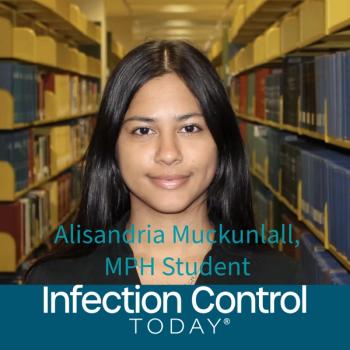
Stopping Ebola Takes Collaboration
In late August 2015, as Sierra Leone anxiously counted each day that passed with no new confirmed Ebola cases, a woman fell ill with fever, then diarrhea and vomiting in Sella Kafta village, Tonko Limba chiefdom, Kambia. Her family cared for her at home and, though her symptoms got worse, no one called the Ebola hotline. She was not tested for Ebola virus until after she died, when the Safe and Dignified Burial team were called to bury her and, following surveillance protocols, took a swab. That swab tested positive for Ebola virus disease, bitterly disappointing a country hoping to see an end of Ebola transmission and triggering a rapid response by the World Health Organization (WHO) and partners.
Knowing who has been in contact with someone infected and who has symptoms that may be those of Ebola virus disease is crucial for understanding where the virus is spreading. Here WHO contact tracing mentors visit homes of people known to have been in contact with the woman confirmed to have died from Ebola virus disease. The day before this picture was taken one such contact said she was feeling very unwell and was scared. She was tested and confirmed to be the second person with Ebola virus disease in the flare-up. Photo courtesy of WHO/S. Gborie
In late August 2015, as Sierra Leone anxiously counted each day that passed with no new confirmed Ebola cases, a woman fell ill with fever, then diarrhea and vomiting in Sella Kafta village, Tonko Limba chiefdom, Kambia. Her family cared for her at home and, though her symptoms got worse, no one called the Ebola hotline. She was not tested for Ebola virus until after she died, when the Safe and Dignified Burial team were called to bury her and, following surveillance protocols, took a swab. That swab tested positive for Ebola virus disease, bitterly disappointing a country hoping to see an end of Ebola transmission and triggering a rapid response by the World Health Organization (WHO) and partners.
Teams of contact tracers, surveillance experts and community engagement specialists were on standby, ready to go to wherever they were needed to stop any further transmission. The district authorities decided to quarantine the entire village of close to 1,000 people for 21 days. Different organizations provided food, water, supplies, social support, educational support for children, even solar powered telephones and assistance with farms so that crops were not left to rot during the growing season. Confirmation of this new case has also set in motion the first "ring vaccination" use of the experimental Ebola vaccine in Sierra Leone.
To view a pictorial from WHO on what it takes to close down Ebola virus transmission,
Source: WHO
Newsletter
Stay prepared and protected with Infection Control Today's newsletter, delivering essential updates, best practices, and expert insights for infection preventionists.






